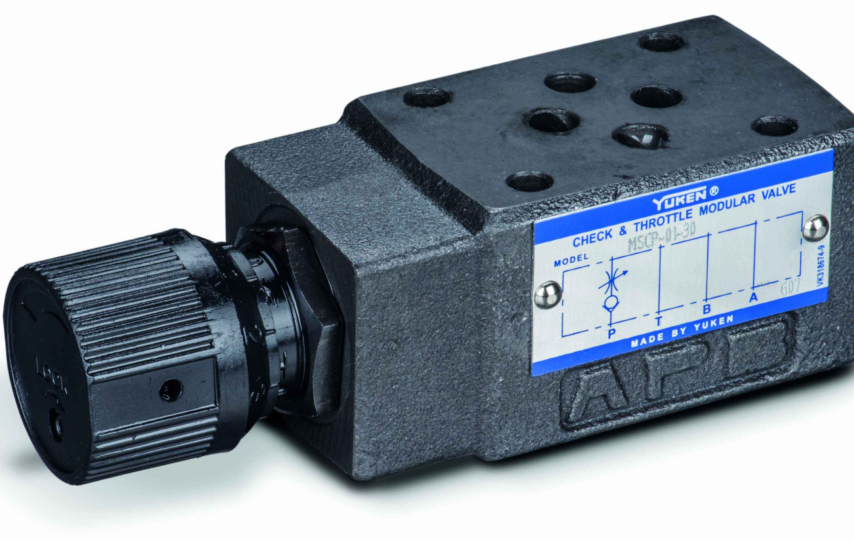A valve that combines the power of mechanics with the intelligence of electronics is the best way to describe an electronic flow control valve. To ensure the proper flow of refrigerant to the evaporator and provide the optimum heat exchange performance with the highest efficiency, the expansion valve and the compressor’s adversary in conventional systems are used. The valve’s job includes safeguarding the system from liquid return among other things.
Benefits of Electronic Flow Control Valves:
There are several benefits to using an electronic valve rather than a mechanical valve that
includes the following:
- Because of the intelligent control system which consists of probes, the controller and its algorithms, superheat control is much more stable and exact.
- Large control range that ranges from 0% to 100% of flow rate
- The ability to work with a variety of refrigerants without having to choose a digital flow control valve depending on that refrigerant. You can choose the kind of refrigerant by changing a controller parameter.
- Electronic flow control valves don’t need to be calibrated on a regular basis like thermostatic valves do.
- Fast reaction to alterations in the environment (on, off etc)
- The use of high-performance gaskets and motors ensures a hermetic seal. On the other hand, to stop refrigerant from moving to the compressor, thermostatic valves must be used in conjunction with a solenoid valve.
Result:
- The Consumer Saves Energy: Less effort for the compressor is a result of the lower condensing pressure. Studies comparing thermostatic and electronic valves, conducted in collaboration with consumers and academic institutions have revealed yearly energy savings of 15 to 35% when utilising electronic valves.
- Lower Expenditures for Upkeep: Better working conditions for the compressor (lower pressures, lower discharge temperatures), no liquid return, and reduced mechanical part damage. For electronic flow control valve calibration, no maintenance is required.
- Manufacturers need to handle fewer components because the same solution can manage many different refrigerants.
This all goes with the goal of protecting our world and assuring the best methods to fulfil our
needs (heating or cooling).
The digital flow control valves are becoming even more necessary due to the development of variable-speed compressors. This is because of their rapid response time to changes in
operating circumstances and the broad control range they provide.The car industry provides a fascinating illustration that clarifies the path we need to follow.
Maximising the effectiveness of all supplementary vehicle systems has become necessary with the emergence of electric vehicles that employ electronic flow control valves to avoid knocking. Electronic pressure valves are essential because of the great efficiency of the battery cooling and passenger compartment air conditioning systems and the limited amount of energy that must be utilised to drive the car.
The following issues kept thermostatic valves from being totally replaced by electronic flow
control valves in the past:
- Upfront expense
- Evident system complexity
- Mistrust of anything fresh
Standards and Regulations:
Electronic flow control valves must be evaluated in line with the PED since they are pressure
devices. Several tests that guarantee the safety and dependability of electronic flow control
valves are described in the UL 429 standard. The RoHs, Reach, and Conflict Minerals
Regulations must also be complied with by the valves and the electronics they contain. This is because they restrict the use of minerals like lead, mercury, and cadmium,
It has become required to conduct safety assessments in hazardous settings due to the
dispersion of flammable refrigerants, thus it is crucial to abide by the relevant reference laws for the kind of unit. These really apply to thermostatic electronic flow control valves as well, with the addition of electromagnetic compliance and electrical safety for which the necessary tests must be performed in recognized laboratories. Based on the intended use, they must comply with all machinery specifications as refrigerating unit components.
The Change as a Result of CO2 and Low GWP Refrigerants:
A number of novel fluids have been developed as a result of the ongoing hunt for the refrigerant with the lowest environmental effect, which has caused considerable market uncertainty. In this regard, electronic pressure valves are superior to mechanical valves because of their design philosophy which guarantees compatibility with the majority of refrigerants. Only chemical compatibility testing and the associated fluid dynamics/thermodynamics evaluations are necessary for each new fluorinated refrigerant or HFO.
Due to the increased diffusion of flammable refrigerants producers are now increasingly
concerned with the product’s tightness and the prevention of sparks. A higher influence from the
use of CO2 necessitated the development of electronic flow control valves with particular high pressure ranges.
In fact, a burst force that is five times higher than the PS (maximum operating pressure) must be guaranteed for a digital flow control valve to receive UL certification. The valve’s capacity to endure pressures more than 700 bar is required for transcritical systems running at up to 140 bar!
Market Conditions:
As a result of the competition for energy efficiency, the market is heading toward more
complicated innovations. While maintaining the focus on dependability, introduce needs that at the first look could appear to be incongruous.
- Shorter Lead Periods for Supplies: Because of this, CAREL and other businesses in this industry were forced to implement a local manufacturing solution in order to be nearer to the final consumer.
- Cheaper Product Prices: By optimising the purchasing of raw materials, modularity has ensured that digital flow control valves are as competitive as feasible.
- A Lot of Product Customization: To offer value to the final client, each participant in our market needs to set themselves out from the competition. This demand may now be met thanks to the electronic flow control valve’s adaptability and the control algorithms’ customization.
- Above all is the necessity for compatibility with new refrigerants. Marketers occasionally get requests for using green refrigerants with new fluid formulations, despite the fact that the strategy generally favours flammables or CO2.
Upcoming Developments:
1st Modification:
The actuators will be the first thing to alter. The development of novel actuators that include
components that change form in response to an electrical signal will eventually replace
conventional stepper motor systems.
2nd Modification:
Control and measurement will be part of the second modification. Smart things will be able to
measure and act instantly and independently of the most complicated systems because of the development of new sensor technologies (driven mostly by IoT) and the miniaturisation of electronics.
3rd Modification:
Systems that are self-powered and do not require cable communication, rather they convey
data via wireless signals or represent the final evolutionary stage. This development will make installation and upkeep much simpler.
CAREL:
From the most basic to the most complex setup, CAREL offers a wide range of flow control
options as of an electronic flow control valve.
The following characteristics make CAREL electronic valves unique:
- Each product undergoes a million opening and shutting cycles under diverse operational circumstances in a reliability test.
- High control accuracy is made possible by the equi-percentile flow profile, which causes a change in flow rate that is proportional to a change in step size. Thus, a quick reaction at high flow rates and consistent flow control with great accuracy are both guaranteed.
- The compressor is protected from harm by a hermetic seal of the refrigerant flow.








